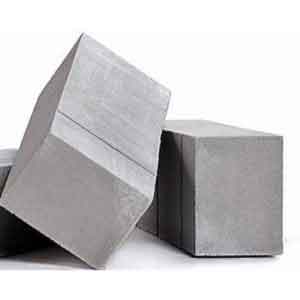Sipolite AAC Blocks Introduction
Autoclaved Aerated Concrete (AAC Blocks) is invented by Swedish people in 1920’s and since it is use worldwide. In present scenario it is compulsion for conserving natural resources and energy. The need to use building components with maximum strength to weight ratio, which will interalia reduces the handling, transportation and erection cost as well as ensure less loads on foundations, thus enabling constructions even comparatively on poor soil conditions. AAC is a micro and macro cellular aerated composite of cement and fly ash transformed to state of hydromonocalcium silicate through (high pressure steam curing) is not only light weight but also possesses adequate structural strength. It has unique properties such as excellent.
The Swedish formulated a mixture of cement, lime, water and sand that expanded due to aeration upon addition of aluminium powder. A material like wood but without the disadvantages of combustibility, decay and termite damage was obtained. The material was further developed to what we know today as Autoclaved Areated Concrete (AAC) Blocks.
AAC Blocks are among the most Eco friendly building products. Which are designed to minimize waste and maximize energy efficiency by using waste material of power plants with zero wastage helps to reduce carbon footprints. It saves depletion of the fertile top –soil and usage of Fly ash and industrial waste into an useful building product with high efficiency.
Area of Applications
-
Residential Building
-
Commercial Building
-
Industrial Building
-
Institutional Building
-
Add on Floors & Extension work
Benefits
Light Weight / High Strength
Oven dry density of AAC Block is 550 to 650 kg/m3. i.e. just 1/3rd the weight of conventional clay bricks and 1/4th weight of density concrete(R.C.C.).Due to which dead load on foundation as well as structure are reduced ensuring economic design thereby saving in concrete and reinforcement steel.
High pressure steam –curing /autoclaving process gives blocks high strength to weight ratio higher than even M150 concrete.
High Thermal Insulation:
The Cellular structure of “sipolite” AAC blocks make it far better thermal insulator than clay brick or R.C.C., thereby making living environment inside the building more comfortable during summer and winter.
In case of air conditioning, the building A/C load can be reduce as much 30% app. Leading to saving in recurring energy cost.
Fire Resistant:
AAC block have one of the highest hourly fire-resistant rating compared to any building material and non combustible. The melting point of AAC Block is more than twice the temperature in a building fire.
Sound Insulation:
An AAC block has an excellent sound transmission class rating of 40 to 50 db. Hence ideal for Residential, Commercial Auditoriums, Theaters and Industrial for cutting of workshop sound from offices.
Low Maintenance:
AAC is an inorganic material impervious to rot, insects and others pests. Building constructed over sixty years ago in different climates has proven AAC to be one most durable and stable building material available.
Environmentally Friendly / Eco Friendly
The Manufacturing process creates no by products and use raw material that are in abundant supply. Process is efficiently engineered to recycle inputs.AAC is recycle, inert and nontoxic.AAC is not source of chemical off-gassing, thus creates a suitable ambient environment.
Energy Efficient:
AAC Blocks are energy and resource efficient in the sense that it user least amount of energy and material per m3 of product. Unlike bricks manufacturing process which uses precious top layer agriculture soil, AAC and block used fly ash 60% thus provides most constructive solution to The Nation’s fly ash utilization problem.
SAVINGS:
COST – AAC blocks are 7-8 time the size of clay bricks, reducing the need for mortar joints by over 60%. Hence save cement and sand. Light weight properties lead to a lighter dead load on building structure resulting reduction in reinforcement steel and concrete. Due to surface accuracy of the blocks the thickness of plaster on AAC blocks is comparatively less. Thus save cement, sand & labor.
Water- AAC blocks are steam cured hence no need of curing after production unlike concrete bricks. At the time of construction block can be joined using readymade jointing chemical, so no need curing of wall, where as at least 7 days curing required for clay bricks / concrete blocks.
Time- Time consumed in building walls decreases due to light weight of the product and its size over conventional clay bricks decreasing lead time, as well as installation time.
Pest Resistant:
AAC blocks are made up of inorganic materials, which do not allow the growth of pests, termites and ants. As they do not nest in AAC blocks.
Earthquake Resistant:
Earthquake forces on structure are proportional to the weight of the building, hence AAC blocks shows excellent resistant earthquake forces. They absorb and transmit less seismic forces in event of any earthquake. The structure has millions of tiny cells which cushions buildings from major force, preventing progressive collapse.
Build Accuracy:
Improved build construction in accuracy of finished walls (Internal & External Wall)
Versatile :
AAC blocks have attractive appearance and is readily adaptable to ant style of architecture, almost any type of design can be achieved with these blocks.








